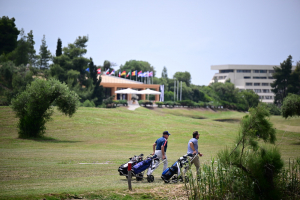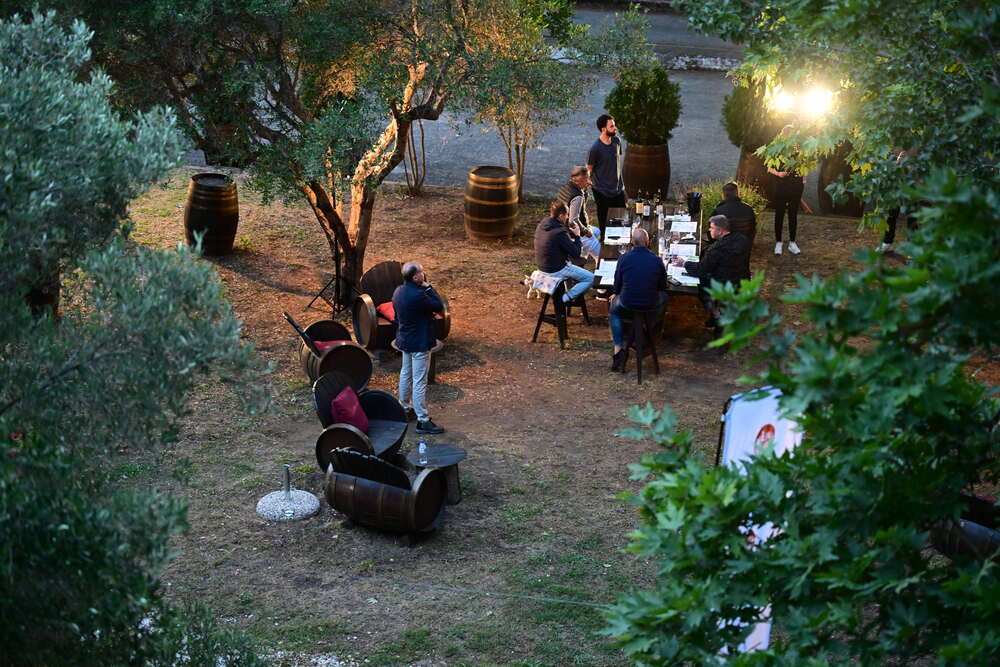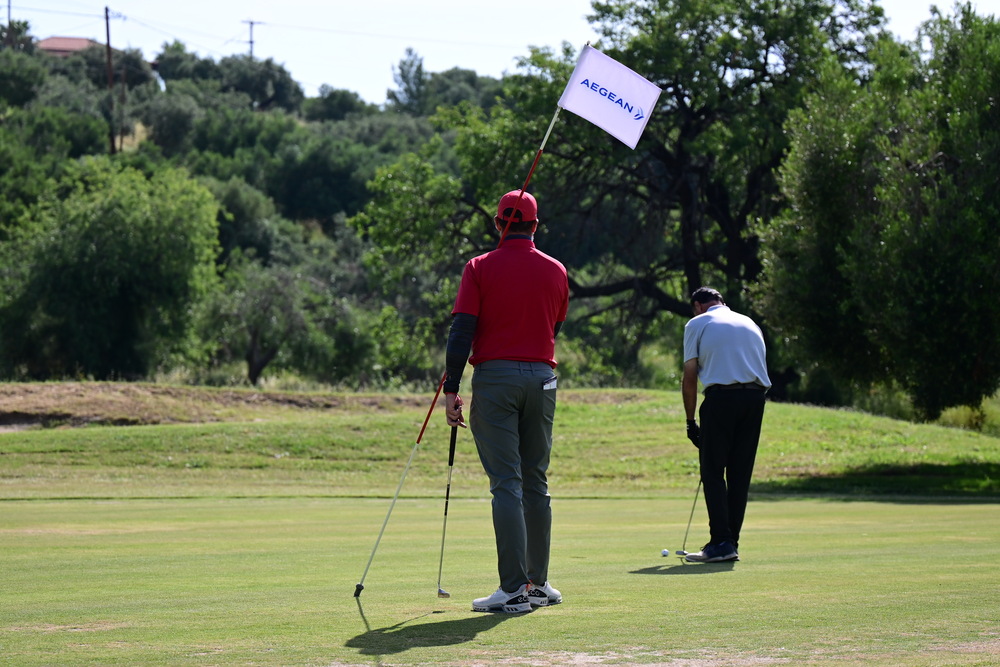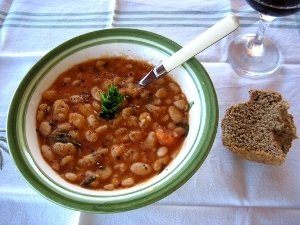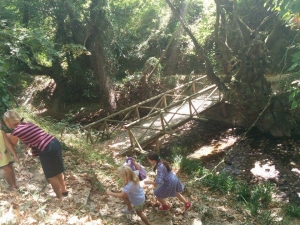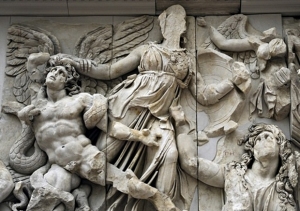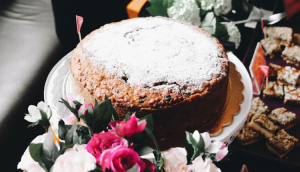Professionals and amateur golfers from Europe, the ideal weather, the impressive golf course of Porto Carras, and the excellent facilities of
Porto Carras Grand Resort, created a unique setting for the international golf tournament
Porto Carras Pro-Am Aegean Mini Tour, held from
May 14 to 18, 2024, on the
peninsula of Sithonia, in
Halkidiki.
In one of the most beautiful and idyllic landscapes in Greece, and on the only 18-hole par 72 golf course in Northern Greece, overlooking the Aegean Sea and the stunning pine forests on Mount Itamos, golfers from twelve countries participated, representing Austria, Bulgaria, France, Germany, the United Kingdom, Italy, the Netherlands, Romania, Serbia, Sweden, the Czech Republic, and Greece.
The golf tournament contributed to the promotion and development of golf tourism in Northern Greece, with visitors enjoying the perfect destination while playing golf amidst the estate’s vineyards, the impressive three lakes of the course, pine trees, and olive trees, while also participating in many parallel activities.
FootGolf with the Legends 2004 Team

With the support of the tournament’s Official Airline, AEGEAN, the exciting FootGolf event was held. Football legends and European champions such as Zisis Vryzas, Fanis Katergiannakis, Angelos Basinas, Vasilis Tsiartas, Takis Fyssas, and Kostas Chalkias, who won Euro 2004 with the Greek national team, as well as the international football player Nikos Lymperopoulos, visited the Porto Carras Grand Resort. Among them, many internationals were invited to place a football into holes larger than those found in golf with as few strokes as possible. The rules of the game closely resembled those of golf, promising an entertaining sport blending elements of football and golf, ensuring a delightful experience filled with fun and joy. The international footballers had the opportunity to enjoy the facilities of Porto Carras, which included participating in a golf clinic, taking a boat trip, and experiencing a wine tasting at Greece’s largest organic vineyard, Domaine Porto Carras.
The Golf Competition
The Porto Carras Pro-Am Aegean Mini Tour schedule at the award-winning Porto Carras Grand Resort, recognized as the top golf hotel in Greece, began on Wednesday, May 15, with a practice round for all participants, followed by a Welcome Cocktail by Domaine Porto Carras in the evening. The golfers enjoyed the amazing cocktails by Domaine Porto Carras and the refreshing mocktails by Souroti. On Thursday, May 16, the 1st round of the Pro-Am took place, and on Friday, May 17, the 2nd round followed. On Saturday, May 18, the competition concluded with the Open Tournament for the professionals and the Individual for the amateurs.
During the games, golfers had the opportunity to enjoy high-quality coffee from Miele coffee machines, protein bars from Lidl, Souroti water, Sknipa beers, traditional Greek souvlaki, and fruits at the registration area, and refreshment stations on the golf course.
Tournament Winners
The schedule officially concluded with the Awards Gala Dinner, which included the awarding ceremony to the winners in both team and individual categories. The event was hosted by the accredited journalist Efi Alevizou. During the night, an honorary award was presented in memory of the late former president of Aegean Airlines, Mr. Theodoros Vassilakis, for his contribution to the development of golf in Greece. The award was given from the Golf and Sports Manager of Porto Carras Grand Resort, Mr. Panagiotis Sabaziotis to the General Legal Counsel of Aegean, Ms. Katia Avramidou. Another honorary award was given to the Greek national team of Legends 2004, the European champions of 2004. The award was presented by the General Manager of Porto Carras Grand Resort, Mr. Konstantinos Anglopoulos to the president of Legends 2004, Takis Fyssas.
In the Pro-Am tournament teams’ competition, the champion team was composed of Papadopoulos, Avramidou, Maltezakis, Piperas. The second-place team included Christos Nikopoulos, Gkotsis, Werner, and Kalogiros, while the third-place team featured Themis Ginis, Fistrek, Hoppen, Fasois. In the special team awards, the top team during the first-day consisted of Sofronis, Bountis, Van Duijne, Fragistas, while the top team on the second day was Elli, Marian Abrashev, Alexander Abrashev, Tourgaidis.

At the individual level, the Swedish Henrik Engdahl was the Pro champion. In the Amateur Gross category, Alexander Abrashev was first, Christian Werner was second, and Marian Abrashev was third. In the Amateur Net category, Anastasios Gkotsis was first, Philippos Piperas was second, and George Karakasis was third. The Longest Drive award for the first day was received by Christian Werner, and the second day by Anastasios Gkotsis, while in the Closest To The Pin category, Petros Tourgaidis won the first day, and Michalis Archangelitis the second.
The guests enjoyed a specially designed menu with unique savory and sweet “golf” selections, cocktails, and mocktails by Souroti, and excellent wines by Domaine Porto Carras. In addition to trophies, the tournament winners received special gifts from Domaine Porto Carras and Sknipa.
Wine Tasting for a Good Cause
The largest unified organic vineyard in Greece, Domaine Porto Carras, supported the event as a Platinum Sponsor and organized two Wine Tasting Sessions for the event’s guests on Thursday, May 16. Participants had the opportunity to experience firsthand Domaine Porto Carras and taste the exquisite varieties of the historic vineyard. In addition, Porto Carras Pro-Am Aegean Mini Tour, with the support of Domaine Porto Carras, reinforced the Association of Parents of Children with Neoplastic Diseases of Northern Greece “LAMPSI”.
During the two Wine Tasting Sessions and at the Awards Gala Dinner, participants had the opportunity to contribute to this cause. The total amount collected by the event was donated to the “LAMPSI” association, which, among other things, ensures the excellent medical and pediatric care of children suffering from malignant diseases, for the creation, organization, staffing, and equipment of specialized oncology, hematology units, providing moral, social, and financial support for the treatment, care, education, and social reintegration of children and providing all possible assistance, information, and other forms of support to the families of sick children. More information about the Association
“LAMPSI”.
Golf Lessons for Beginners
Finally, on Saturday, May 18, non-golfers along with the Legends 2004 team participated in a Golf Clinic. There, they learned the basic principles of the Olympic sport of golf and had fun improving their flexibility, concentration, and mental health.
The Official Airline of the tournament was AEGEAN, a member of the leading airline alliance, Star Alliance. For the 12 th consecutive year and 13 th overall, AEGEAN is declared the passengers’ top preference and wins the title of “Best Regional Airline in Europe” according to the Skytrax World Airline Awards 2023.
The event’s sponsors:
Platinum Sponsor: Domaine Porto Carras
Official Airline: AEGEAN
Gold Sponsors: Lidl, Auto Hellas Hertz, Play Kids
Silver Sponsors: Miele, Quantos
Bronze Sponsors: Souroti, Luanvi, Olga Karaververi
Official Sponsors: Taylormade, Dacristo, Sknipa Beer, Cross Sportswear
Official Partners: Jardin Plus, Kapa Olive Farm, Liokladi, Messinian Spa
The sports marketing agency of the year ActiveMedia Group was responsible for the event’s Golf Production.
#portocarrasproam #aegeanminitour #portocarras
Porto Carras Porto Carras Grand Resort is the historic iconic resort that has contributed significantly to the establishment of luxury tourism in Greece, especially in Halkidiki. For 50 years, it has been offering high-level services and authentic Greek hospitality to its guests in an environment of unparalleled beauty and intense contrasts. Located alongside a sandy coastline of 9 kilometers and surrounded by a verdant area of 18,000 acres, with gardens under the shade of pine trees dressing the slopes of Mount Meliton. Its facilities include an 18-hole golf course, the biggest organic vineyard in Greece, a spa and wellness center, restaurants with high-level gastronomy, a casino and a marina that provides integrated services. In addition, a wide range of sports and cultural activities on land and sea are available to visitors of all ages.


